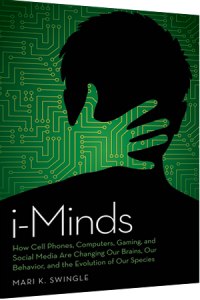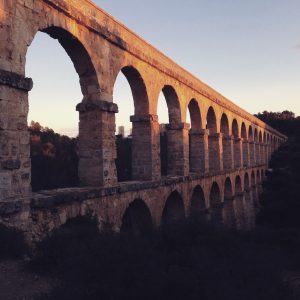Wayfinding, Roots, & Growth: A Professional Learning Journey
To live is to experience.
To experience is to learn.
To learn is to grow.
My professional learning journey has taken me to challenging places physically, intellectually, and emotionally. It has taken me to rural districts, foreign cultures, First Nations communities, and suburbia. Here is what I have learned on my teaching journey.
- Who am I as a learning professional? – I believe in creating authentic social relationships, as opposed to judgmental ones based on authority and power. I know one of my strengths in teaching is that I am able to effectively and responsibly wield power in the classroom, but that exemplary educators are able to share that power with their students, to let it go. I must believe in their own ability, for I am merely a guide and mentor, not some benign Protector of Knowledge.
I believe that my inquiry journey into technology has opened my eyes into the importance of multiliteracies, particularly how we assess them, and that digital technologies are only one aspect of multiliteracy education. My inquiry has shown me the divide between the privileged and the forgotten – from urban powerhouses, where each classroom receives its own set of iPads; to dying boom towns, where a school of 1000 students must share 30 portable laptops; to rural communities, where the investment into new technologies has already taken place, but that both teacher and student are ill-equipped to use and thereby benefit from the investment itself.I am my grandmother. While it might seem odd to state, especially of a woman I knew little of, there is no doubt that my relationship to the profession of “learning professional” (previously known as “teacher”) is rooted from the connection I have to this woman. Though I only met her twice when I was three and ten years old, I remembered how unconditional love guided her every action and when I later visited the rural village where she taught, strangers would approach me and tell me what a wonderful person and teacher she was. Her story has shown me that excellent teachers are flexible, creative, and resourceful. When me SAs and FA celebrated my ability to engage with students respectfully and sensitively, I knew where this skills and instinct came from. I am only half the teacher and half the person she was, but I seek to improve myself each day with her as my north star.
- What are my educational commitments? – Below I have highlighted my teaching philosophy. This philosophy is always a work-in-progress and I hope to expand it further as I acquire knowledge and teaching experience.
I believe that education is empowerment.
I was taught at a young age to always value my education as “the one thing no one can ever take from [me]”. This is an axiom I live by and I make sure to teach it to my students. In this pursuit of student empowerment, I choose to promote 21st century skills in the classes I teach, thereby giving students the tools they need to navigate the world they will soon inherit. In order to prepare my students for the world, I emphasize critical, historical, and geographic thinking. In particular, I challenge them to speak out in class and challenge one another’s ideas, as I can not imagine learning without respectful dialogue.I believe that relationship is everything.
My personal life experiences have taught me that learning can happen anywhere. Following this, people must people strive to relate to each other, but also to the unique environments we find ourselves in. Therefore all learning is lived experience. But learning to happen and growth to occur, all relationships must be establish on the basis of mutual trust between parties. By promoting healthy relationships based on mutual trust, as opposed to obedience and authority, learning professionals can build bridges between students, colleagues, disciplines, administrators, parents, and the larger community.I believe that resilience is growth.
Students need to be taught how to successfully cope with failure, namely, that we experience the most growth by learning from all experience, even if our experiences are initially viewed by us to be unsuccessful or unrewarding. I also believe that a great teacher is a reflective practitioner, but exemplary teachers model this reflective practice for their students each day and provide them with the critical thinking and communicative tools they need to themselves become reflective and engaged individuals. By representing the concept of failure as a positive learning experience, students are allowed to reflect and develop a positive self image by creating positive mindsets, which also increases self efficacy. -
What have I learned from this year? – I have learned to focus on the process and the value of formative assessment practices. My inquiry focused on technology in education, but when I realized that my school district was underfunded and that most teachers who utilized new technologies paid out of their own pockets, I realized that a shift in thinking was necessary. This shift brought me to best assessment practices and multiliteracies theories, of which there are four: cognitive-psychological, psycholinguistic, sociocultural, and sociopolitical. Each of these multiliteracies theories acknowledges the breadth of knowledge humans acquire over a lifetime and by using each theory in my assessment practices, I can maximize student engagement and better support learning in a positive classroom environment. The advantage of transferring my inquiry from digital technologies to best assessment practices using multiliteracies theories, is that I can still continue to research, design, and reflect upon the role of digital technologies within an assessment through multiliteracies framework.Moving forward, I hope to establish best assessment practices early on in my professional career and possibly work towards a TESL certificate within the year. I plan to dedicate any professional development opportunities that come my way in the near future, towards assessment, inquiry, and multiliteracies.
These experiences unique to my story have shaped who I have become and how I see the work of a teacher as it relates to students, colleagues, and community. I thank you for taking the time to read this reflection and hope it has inspired you.


